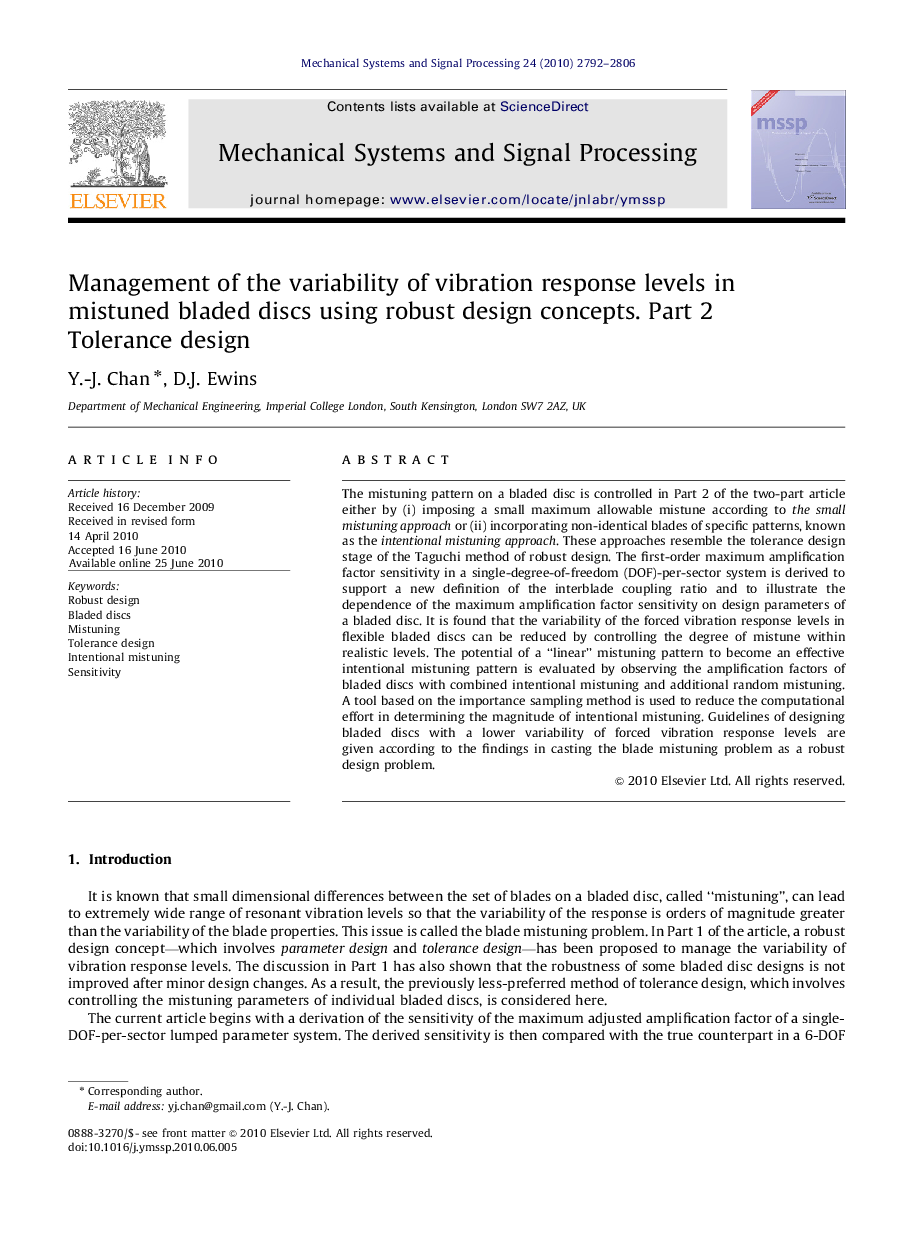| کد مقاله | کد نشریه | سال انتشار | مقاله انگلیسی | نسخه تمام متن |
|---|---|---|---|---|
| 565630 | 875797 | 2010 | 15 صفحه PDF | دانلود رایگان |

The mistuning pattern on a bladed disc is controlled in Part 2 of the two-part article either by (i) imposing a small maximum allowable mistune according to the small mistuning approach or (ii) incorporating non-identical blades of specific patterns, known as the intentional mistuning approach. These approaches resemble the tolerance design stage of the Taguchi method of robust design. The first-order maximum amplification factor sensitivity in a single-degree-of-freedom (DOF)-per-sector system is derived to support a new definition of the interblade coupling ratio and to illustrate the dependence of the maximum amplification factor sensitivity on design parameters of a bladed disc. It is found that the variability of the forced vibration response levels in flexible bladed discs can be reduced by controlling the degree of mistune within realistic levels. The potential of a “linear” mistuning pattern to become an effective intentional mistuning pattern is evaluated by observing the amplification factors of bladed discs with combined intentional mistuning and additional random mistuning. A tool based on the importance sampling method is used to reduce the computational effort in determining the magnitude of intentional mistuning. Guidelines of designing bladed discs with a lower variability of forced vibration response levels are given according to the findings in casting the blade mistuning problem as a robust design problem.
Journal: Mechanical Systems and Signal Processing - Volume 24, Issue 8, November 2010, Pages 2792–2806